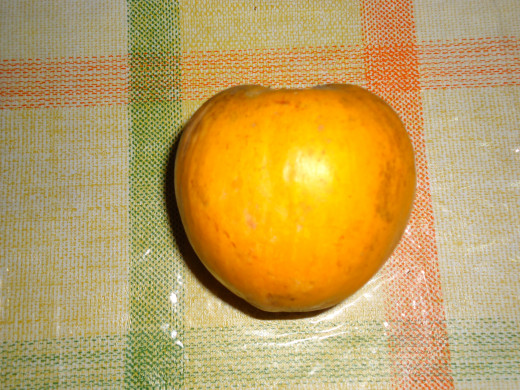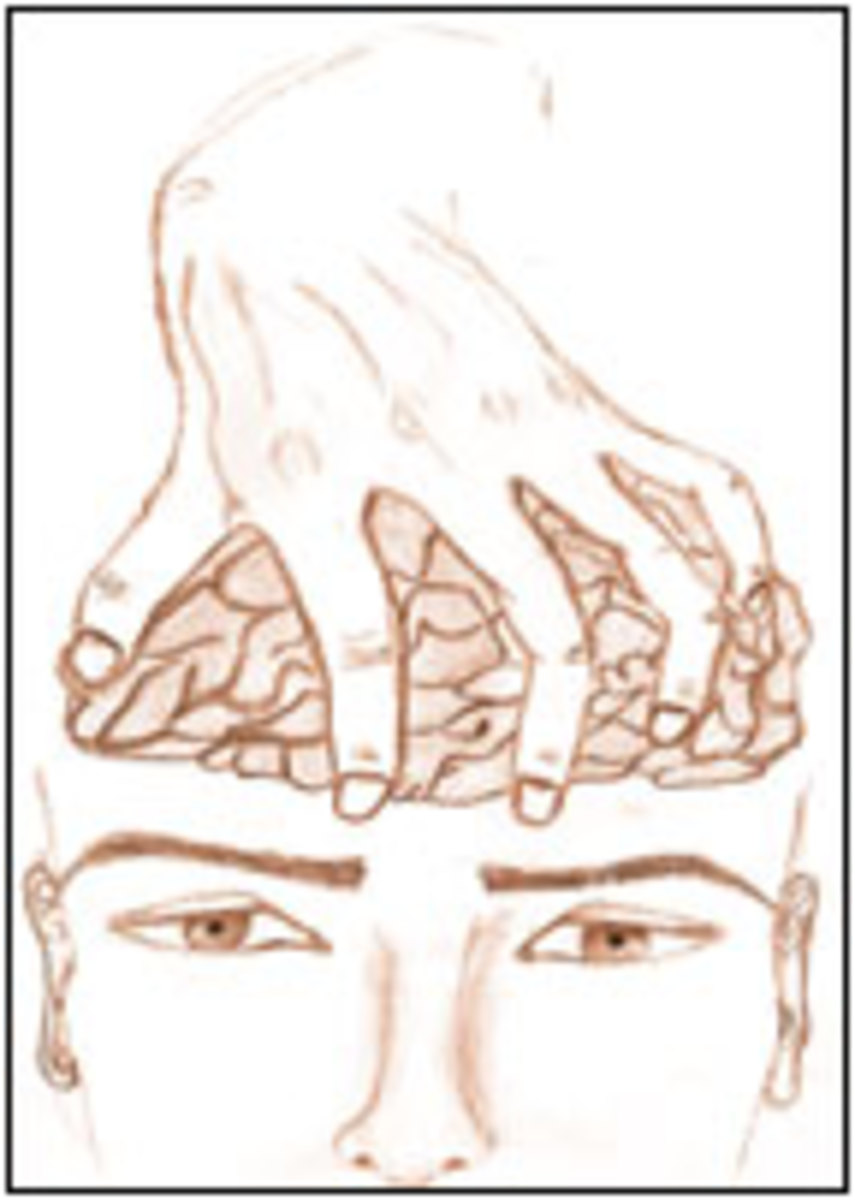Why Science is So Poorly Understood
Chesa fruit is an antioxidant against singlet oxygen, a free radical

Science poorly understood by the general public
Why is science so poorly understood by the general public?
The keywords in this question are "science" "understood" and "general public." Let's make "understood" and "understand" convertible to each other.
I prefer to start with the statement: "Science is poorly understood by the general public." Then we proceed by defining science and general public. Let's grant that we have an idea of what is "understood" or "understand."
Let us settle the easy one: general public. This is a category of audience whose one property is level of education. Let us say, general public consists of members who had finished high school education.
In the Philippines, high school students are trained in doing science, that is, conducting an experiment. For example, third year high school students have a science fair. Individual students or a group of two conducts an experiment whose write up and materials are exhibited. One such experiment could be "The effect of leaf extract of neem (Azadirachta indica L.) on golden apple snail."
What is science?
"Science (is) any system of knowledge that is concerned with the physical world and its phenomena and that entails unbiased observations and systematic experimentation. In general, a science involves a pursuit of knowledge covering general truths or the operations of fundamental laws" (Encyclopedia Britannica 2012)..
Britannica adds: "... For the basic aspects of the scientific approach, see physical science, principles of. For the historical development of the different sciences and their scope, component disciplines, methods, and principal problems, see physical science; Earth sciences; biology; medicine, history of; engineering; social science."
In short, science consists of a body of knowledge and an approach to accumulation of knowledge. One way of understanding science is exposure to science, to the body of knowledge and the approach of science (conduct of experiment or theory-making).
At the start, exposure to science is in a way of simple declarative sentence. "This is red." You utter this sentence while pointing to a patch of color you heard somebody else calling it red.
In high school we encounter subjects like biology, physics, chemistry, botany, and genetics. Early on, we know them as bodies of knowledge. In third year or fourth year we are introduced to the approach of science by conducting simple experiments.
In biology, I had difficulty understanding the sentence "Man evolved from monkeys." Why? There is also a sentence "Man is created in the sameness of God." The difficulty lies less on deciphering the sentences but more in belief. Which should I believe? In the statement about evolution or on the creation? Resistance to evolution leads to difficulty in understanding science.
Conflict between science and religion
My exposure in high school teaches me about evolution. My exposure in church tells me about creation. I did not take the conflict between evolution and creation. I was satisfied that I got good grades in biology.
That is one of the reasons why science is so poorly understood: the conflict between science and religion unless you have a religion that admits evolution.
History is replete with how religion blocked science. There was a time when it was believed that the sun revolved around the earth. This was pronounced as truth by the Catholic Church. Galileo discovered with the use of his telescope that the earth revolved around the sun. He told it so to Pope Urban in early 17th century. Whereupon, Pope Urban convicted Galileo as a heretic and caused his imprisonment for life. There was a time the Catholic church caused the burning of forgetful people at the stakes for being considered as witches. We now suspect that those people might have been suffering from Alzheimer's disease or dementsia.
Then there is another sentence that is difficult to understand and believe: "Mary went bodily to heaven." Was Mary (the mother of Jesus Christ) dead? Or is she living? Does she need to eat in heaven? What kind of food does she eat? Or she should not be considered a human being anymore. How could the status of Mary be verified? The church would say, take it on faith.
If you are a good man/woman (where being religious is part of being good) you belong to a religion. If you are a good part of the general public you are either a religious fellow or one who does not commit a crime against society.
One scientist whom I consider good was Dr. Pedro A. Escuro, Ph. D. a national scientist in Genetics of the Philippines. I wrote his short biography that was published with other biographies in a book "National Scientists of the Philippines, 1978-1998". For his biography I interviewed him personally. He heard mass in the Catholic Church of College, Los Banos, Laguna, Philippines, at the outskirts of the University of the Philippines Los Banos campus where he was a researcher and member of the faculty. He bred the C-4 varieties of rice that at one time made the Philippines self-sufficient in rice. C4-63 G variety has a yield that is 20% higher than the traditional varieties. He said he "created" C-4 varieties. I consider him good because he had the ability to breed a variety that can remedy poverty or lack of food. (Self sufficiency in rice consists in high yielding rice variety, wide adoption of this variety, hectarage of cultivation, and equitable land tenancy.) He used the term "create." However, he said:
"What science cannot understand is attributed to God."
That was his personal philosophy. He was a good scientist who belonged to a religion; who understood the limits of science and the scope of religion.
The conflict between religion and science makes for the poor understanding of science. However, religion has been on the retreating end. For example, the modern priest in a modern church uses the microphone and public address system in celebrating mass. These devices were a result of science. The cathedral (the building) is a result of science, using Newton's theory of gravity, particularly weight. If the architect and the construction engineer did not consider weight they could not build St. Peter's basilica in Rome. They computed weight and strength of materials to use so that its dome would not collapse.
Philosophy and astrology
Science started out as philosophy. Democritus thought that matter is made up of small particles that we now call atom. There are philosophies that graduate into science like pantheism and pragmatism (of the variety "what works is true"). There are philosophies that could not graduate into science, like dialectics.
Astrology that came ahead of science is one reason why science is poorly understood. (I have a Hub on why astrology is not a science like physics or astronomy.) There is a lot of people who adhere to astrology whose predictions fail most of the time.
There is an overriding desire of man/woman to interfere with nature such that it will bend to his/her desires.
Body of knowledge
Science as a body of knowledge is easier to understand than science as an approach or method. Body of knowledge may be divided into knowledge by description and knowledge by acquaintance. (I have Hubs on this topic.) Knowledge by description consists of symbols (a, b, c, stone, sun, "The moon revolves around the earth"). Knowledge by acquaintance consists of behavior. Eating apple without uttering a word or making a sound is knowledge by acquaintance. So is a cat chasing a mouse without mewing. A surgeon operating on a heart without making a sound (except giving instructions to assistants) is using knowledge by acquaintance.
Biotechnology
Let's turn to biotechnology, particularly genetically modified organism (gmo). For example, the Btcorn invented by Monsanto. "Bt" stands for Bacillus thuringiensis, a bacterium. Bt is used as a natural pesticide that protects crops, like corn, against the stem borer, an insect. Some genes of Bt are isolated and inserted in the chromosomes of corn. So, Btcorn carries genes of Bt that confers resistance to pests like stem borer. Monsanto says the advantage of Btcorn is that it has a built-in pesticide that guarantees high yield. Of course, it gives profits to Monsanto.
However, an ethical question has arisen. How safe is Btcorn? What is the effect of eating corn on the consumer? What is its effect on other crops, insects and wildlife? What is its effect on the environment? Monsanto says Btcorn is safe. Environmentalists disagree.
Is Btcorn safe? I have a Hub on a statement that is neither true nor false. The reason is that there is no evidence in its favor and against it in the past or in the long future. Such statement belongs in the law of excluded middle that is not knowledge. As a part of knowledge by description, Btcorn is easy to understand. But to adopt it? To eat Btcorn?
Again, resistance to Brcorn leads to a poor understanding of science.
Stem cell
Let's turn to stem cell research that perked up in 1960s. Early on the human embryo was used in research. One of the objectives has been to use stem cells in treating and curing diseases like heart disease or cancer. The egg of a woman fertilized by the seed of a man results in a zygote that consists of one cell. This is in the stage of totipotent stem cell. This differentiates into pluripotent stem cells. These differentiate into multipotent stem cells. These differentiate into unipotent stem cells that give rise to nose, eyes, skin,. liver, kidney, heart, etc. Differentiation is shown by fetal development from one cell to a fetus with heart, teeth, hair, etc. There arose an ethical question on the use of embryo in stem cell research because that is tantamount to killing the embryo. Later on it was found that the stem cell in the cord blood harvested before the delivery or after the delivery of the newborn can be used in research. In fact, cord blood is being preserved in a blood bank for use in treating leukemia and other diseases. Finally, the adult cells can be reprogrammed back to pluripotent or multipotent stem cells for use in research and curing leukemia and other diseases.
Now, even the stem cells from sheep can be used on human beings to treat diseases.
Oral stem cell therapy is used to trigger stem cells in the body, according to Dr. Arturo V. Estuita, MD, a Filipino internist and chelationist. He administers this therapy in his clinic in Pasay City, Philippines. Oral stem cell therapy triggers stems cells of the body to regrow damaged organs like earlobe, heart valve or liver.
Another Filipino doctor uses stem cells from chicken eggs. He claims that fertilized chicken eggs can cure heart disease (myocardial ischemia with angina as symptom).
However, stem cell therapy is considered as experimental by insurance and health maintenance organizations (HMO) that will not pay for it if its member will use it. That means there is an effective resistance put up by HMO.
Resistance to alternative medicine
Similarly, there is a resistance by conventional medicine, insurance and HMO to chelation therapy, an effective alternative to angioplasty and coronary arterial bypass graft surgery (CABG). CABG is a billion-dollar industry.
Resistance by other sectors of science and by Big Pharma and manufacturers of equipment contribute to poor understanding of science. The resistance is owing more to profits than the science itself.
The profit motive blocks progress and understanding in medical research. There is a tug of war between the germ theory of disease and the free radical theories of disease. In germ theory, microbes are the causes of diseases. In free radical theory, free radicals and derivatives are the causes of disease like heart disease and cancer. Research in the latter and development of drugs along with it is being blocked by Big Pharma and conventional medicine because of their big investments in conventional drugs for use in alleviation (not cure) of cancer.
Prevention and treatment of cancer can be less costly. For example, yellow foods, like chesa, can prevent melanoma or skin cancer. Melanoma is caused mostly by singlet oxygen produced by ultraviolet rays of the sun. Our body has no antidote for singlet oxygen. The only antidote is beta carotene found in colored foods, fruits and vegetables. Beta carotene, as antioxidant, protects against singlet oxygen. However, conventional.medicine pooh-poohs antioxidants.
How does beta carotene work against singlet oxygen? This kind of oxygen is produced when energy from the sun hits molecular oxygen with two unpaired electrons spinning around the molecule in parallel direction. The energy reverses the direction of one unpaired electron thus the two unpaired electrons now spin in opposite directions. They can simultaneously grab electrons from other molecules of tissues thus inflict injury that results in tumor and cancer.
To prevent the reversal of spin of one unpaired electron, the energy that causes the reversal must be diffused or trapped. Energy must be at least 1216 kcal/mol. Beta carotene traps that energy to be lost in the environment. Beta carotene is like chlorophyll, the green pigment in plants that traps energy from the sun for use in making food for the plant (and man/woman). Singlet oxygen is more destructive than molecular oxygen because the former grabs two electrons at the same time while the latter grabs one electron at a time.
Incidentally, conventional medicine is using free radicals in chemotherapy. Drugs in chemo like adriamycin (doxorubicin) produce a lot of free radicals (singlet oxygen) that kill cancer cells and healthy cells in the vicinity of cancer cells as well (Sharma, H. Freedom from Disease. 1993). That is why chemo has side effects. Rivalries within medical research contribute to poor understanding of medical science. The ultimate victims are potential and actual sufferers of heart disease and cancer, the number one and number two killers in the world, respectively.
Climate change
The case of climate change is similar. The protocols in the regulation of carbon dioxide emission was resisted by the fossil fuel industry because that would lead to less consumption of oil. There is also resistance from climate change scientists. For example, it is extrapolated that a doubling of carbon dioxide emission will result in a rise of temperature by 1.5 degrees F. Some of them say you cannot make such a prediction. Others would deny climate change like Republicans in the past presidential campaign in the United States. .
Theory-making
Theory-making in science, an approach, is seldom engaged in by the general public. Some scientists do not indulge in theory-making either. I have not come across a theory of the Salk vaccine written by Dr. Jonas E. Salk; however, he came close to it. I have proposed a theory on how the shape and size of killed polio virus incite immunization. I am using Einstein's definition of theory as framework. Einstein said a theory consists of concepts and relationship between concepts (Einstein, A. Ideas and Opinions. 1954). Some think that a theory is any possibility you can think of, not considering probability.
Conventional medicine does not have a theory of heart disease. It mentions risk factors (DeBakey, M. MD and A. Gotto, Jr., MD. The New Living Heart. 1997). However, these do not constitute a theory. They only exacerbate the effects of the causes of heart disease and cancer. Free radicals and their derivatives cause these diseases. A risk factor is a device used to predict the probability that a person will contract a disease, Dr. DeBakey and Dr.Gotto wrote.
Ernest Rutherford was an experimentalist in nuclear physics who invented a model of the atom. But Rutherford failed to come up with a special theory of relativity. Einstein, a nuclear physics theoretician, did. He used results of experiments done by other scientists like the speed of light measured by Michelson and Morley, Lorentz transformation formulated by Hendrik A. Lorentz, and propagation of electromagnetic waves discovered by Faraday.
A difficult part of theory-making is incorporation of an assumption. Einstein used the Lorentz transformation as an assumption. He did not have to prove this assumption; in fact, up to now this assumption has not been proven by direct experiment. For one, Lorentz transformation says that the laws of nature in one coordinating system (galaxy) are the same as in another coordinating system. Einstein had not gone to another galaxy to observe such laws. The Lorentz transformation was proved by deductive logic.
Coming up with a concept is difficult enough. It is here where the creativity of a scientist comes in, according to Einstein. He invented the concept space-time that is part of his generalized theory of relativity. This arose from his use of Riemannian geometry that is different from Euclidean geometry. He could not have come up with the general theory with just the Euclidean geometry. The general theory consists of three Euclidean dimensions and one Riemannian dimension - time.
Another reason why science is poorly understood by the general public is that the tools are difficult to master. The simple tools like arithmetic, average and percentage are easy to master. But statistics (analysis of variance) for use in analyzing several items like census or electrons pose some difficulty. Even the analysis of discrete or determinate objects like planets and comets needs some involved mathematics like differential calculus.
Einstein's special theory and generalized theory of relativity were couched in mathematical language. When his special theory was published in 1905, only one man understood it - Max Planck. So in 1906 he issued a statement of fact (indicated as E = mc2) derived from his theory. This was used in the manufacture of the atomic bomb. When two such bombs were dropped and exploded in Nagasaki and Hiroshima, Japan in 1945, the general public thought they could now understand Einstein's special theory of relativity.
I have several Hubs on theory-making: "Salk vaccine: how the size and shape of killed poliovirus incite immunization," "A new theory of rheumatic heart disease," "How to protect against prostate cancer," "Big Bang, Origin of the Universe: What is the Mystery?" a theory on heart disease, and a theory on tumor and cancer.
A theory explains, predicts and serves as basis of prevention, treatment and cure of diseases.
For example: how do killed polio virus incite immunization? Components of the immune system react to the shape and size of killed virus. That is why Dr. Salk killed the virus and hardened the coat with the use of formalin. That reaction to the coat is enough to incite immunization. The Salk vaccine does not contain a "live" component that can multiply and infect. That is why the Salk vaccine is safe. My Hub gives a more detailed elaboration.
Profits and politics in science (new entries as of January 16,2014)
Economic power and political power have impaired understanding of science. For example, the vaccines that have stirred controversy. We have the Gardasil and Cervarix, vaccines supposedly to protect against cervical cancer, but are causing side effects and are ineffective against cancer. There is the MMR, vaccine against measles, that is causing autism in children.
The issues in vaccines are that the manufacturers are so powerful they can cajole states and even countries to mandate vaccination. For example, in some states in USA, vaccination with Gardasil is mandated. Also, vaccination at birth for hepatitis B is mandated. Several side effects of this vaccine have been reported.
There are also cases of feed additives for livestock that leave residues in the meat consumed by people. We have additives like ractopamine that are beta-agonist which promote heart attack and stroke in people. These are banned in 160 countries but allowed by the Food and Drug Administration of USA for use. FDA's action impacts in other countries that import and use these additives.
How could people who suffer from side effects of the so-called fruits of science appreciate and understand science? Profit and politics overwhelm science in several cases.








